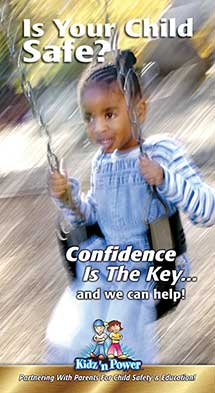
Confronting Your Worst Nightmare
3 Steps to Child Safety
By Melanie VanNuys
Short of death or serious injury, nothing frightens a parent more than discovering their child may have been abducted. Unfortunately, there are nearly 800,000 children reported missing each year – that's more than 2,000 per day! But the right information can help parents prevent abduction and can earn them precious time in the event that the unthinkable happens.
Step One: Become Internet Savvy
While there isn't just one place that is more unsafe than another, children are most vulnerable in parks, shopping centers, places with little adult supervision and anywhere dark and conducive to the child being alone. However, one place of particular vulnerability comes to mind. “A child can be most vulnerable in her own bedroom with a computer,” says Bob O'Brien, director of the Missing Children's Division at the National Center For Missing and Exploited Children.
The Internet is a wonderful place for people of all ages. It resembles a city – complete with museums, libraries, recreational activities and places to meet all types of people. All types of people include pedophiles and child predators. Fortunately, more and more information is being made available to parents and children about staying safe on the Internet.
Talk to your children about Internet safety and monitor their computer usage. This may mean moving the computer out of the bedroom and into a public space, such as the family room. For more information on protecting your child while he or she is on the Internet, go to NetSmartz.org, a site full of online and offline activities that can help your child be safe while surfing the technological superhighway.
Step Two: Know the Drill
While the chances of your child being exploited or abducted are remote, parents and guardians should be vigilant when it comes to keeping all kids safe. “The most effective tool [for protecting our kids] is an informed citizen,” says Bob O'Brien, director of the Missing Children's Division at the National Center For Missing and Exploited Children. What makes an informed citizen? Information, of course! Know the rules for preventing abduction, and go over them with the children in your life:
- Teach your children to run away from danger, never toward it. Their safety is more important than being polite. Teach them to run, kick, scream or anything else that will draw attention to the situation.
- Have your children participate in a professional martial arts or self–defense program to learn effective skills to protect themselves. One of the keys to effective personal protection is “Confidence” and one of the keys to a great program is building children's confidence and self–esteem.
- Never let your children go places alone. There is safety in numbers. “When two or more people are involved, a would–be abductor doesn't feel he or she can control two people,” O'Brien says.
- Know where your children are and who they are with at all times.
- Talk openly to your children about safety, and encourage them to tell you or a trusted adult if anyone or anything makes them feel scared, uncomfortable or confused.
- Practice what you preach! Create “what if” scenarios with your children to make sure they understand the safety message and can use it in a real situation.
- Consider installing an alarm system in your home with a monitoring feature, and make your children part of securing your home.
- Have a list of family members who could be contacted in case of an emergency.
- Be alert to and aware of your surroundings. Know escape routes, and plan what to do in different emergency situations.
- Consider varying your daily routines and habits.
- Take steps to secure your personal information.
- Report any suspicious persons or activities to law enforcement.
- Make sure that your children know their own phone number, full name and phone number.
Step Three: Expect the Unexpected
The first three hours after a child has been abducted are the most critical.
“Parents should have steps to take if their son or daughter is missing to act quickly,” says Bob O'Brien, director of the Missing Children's Division at the National Center For Missing and Exploited Children.
If your child doesn't show up when you expect him or her, pick up the phone and get dialing. This should be an easy step if you are keeping close tabs on your kids, knowing exactly where they are and who they are with. O'Brien takes knowing your child's whereabouts a step further, saying you should have their friends' phone numbers and even their friends' parents' cell phone numbers if possible.
If after calling your child's friends, you still haven't found your son or daughter, contact the authorities immediately! You will provide basic information: a recent picture, height, weight, eye color, hair color, clothes they were last wearing and the time they were last seen. All of this is crucial and necessary before an Amber Alert can be issued. The Amber Alert system is one of the latest and most innovative tools in fighting child abduction. “AMBER” is an acronym for America's Missing Broadcast Emergency Response and was created as a legacy to 9–year–old Amber Hagerman, who was kidnapped while riding her bicycle in Arlington, Texas, and then brutally murdered. Having your child's information readily available will help authorities launch the Amber Alert system more quickly, which increases the chance of finding your child unharmed. Carry a recent photo of your child at all times.


